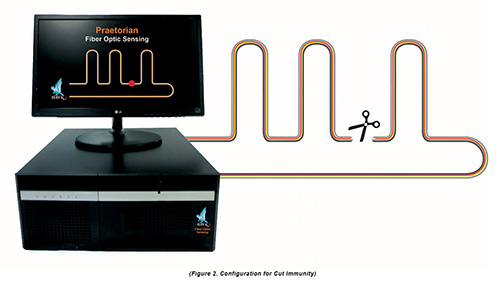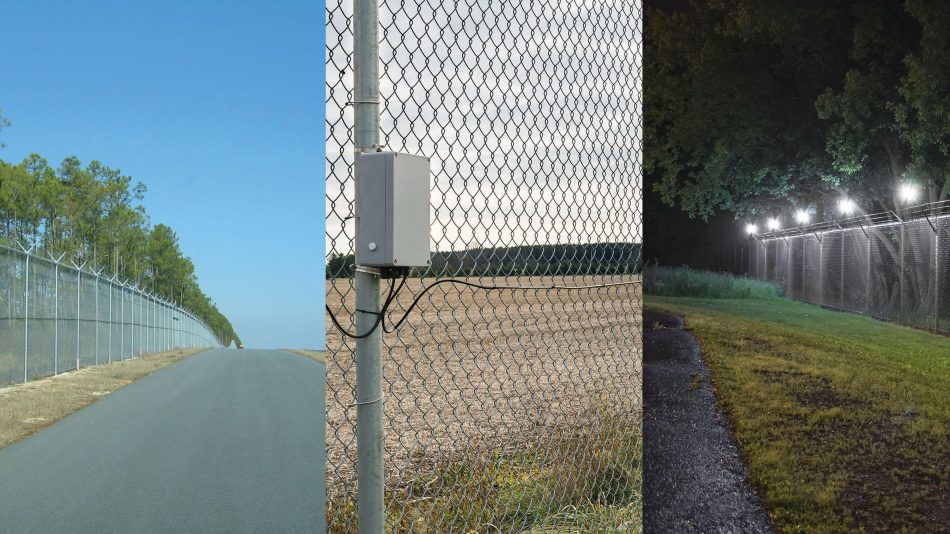Why Choose a Fiber Optic Security System for Maximum Security and Efficiency
Why Fiber Optic Security Systems Are the Future of Security
The change to fiber optic safety systems marks a significant development in the world of security, driven by their remarkable information transmission abilities and resilience to outside interferences. These systems not just help with faster and a lot more reputable communication but also offer an affordable service with lowered upkeep needs. As the landscape of safety and security advances together with emerging technologies such as AI and IoT, the potential for fiber optics to enhance and redefine safety and security infrastructures becomes increasingly obvious. The implications of these innovations increase critical questions about the future of safety procedures and their performance in an ever-changing setting.
Advantages of Fiber Optic Solutions
Among the key advantages of fiber optic systems is their premium bandwidth capacity, which helps with the transmission of large volumes of data over lengthy ranges without considerable loss. This particular is particularly advantageous for safety and security applications that call for the continual monitoring and transfer of high-definition video clip feeds, sensing unit data, and various other essential information. Optical fiber can accommodate the growing needs of modern-day safety systems, ensuring that data stays intact and reliable.
Additionally, fiber optic cables are much less susceptible to electro-magnetic disturbance, which can be a substantial issue in settings with different digital tools. This resistance enhances the honesty of the information being transferred, consequently decreasing the risk of data violations or system failures. Moreover, fiber optic systems are naturally much more protected than typical copper wires, as taking advantage of a fiber optic line without discovery is exceedingly challenging.
The sturdiness of fiber optic wires also adds to their appeal. They are immune to ecological variables such as wetness and temperature changes, lowering upkeep costs and increasing system long life. On the whole, these advantages position fiber optic systems as a durable and reliable selection for modern-day protection infrastructures, making sure reputable and secure data transmission.
Boosted Information Transmission Speed

The capability to send substantial quantities of data rapidly assists in the smooth assimilation of high-def video clip feeds and progressed analytics. Protection systems can currently refine and analyze information in real-time, enhancing reaction times and situational recognition. Additionally, fiber optic connections support longer transmission distances without degradation of signal quality, making them optimal for expansive safety and security networks.
The raised rate of fiber optic systems not just boosts the performance of protection procedures yet additionally lowers latency. This is specifically vital in essential circumstances where prompt decision-making can stop safety violations or reduce prospective threats. As companies continue to focus on safety and security and effectiveness, the demand for fast and reliable information transmission will certainly strengthen fiber optic systems as a keystone of contemporary safety and security infrastructure.
Resistance to Disturbance
Fiber optic safety and security systems regularly show phenomenal resistance to electro-magnetic interference, a crucial benefit in atmospheres prone to digital noise. Unlike conventional copper cords, which can be negatively influenced by electromagnetic this hyperlink fields, superhigh frequency interference, and various other types of electrical disruption, fiber optic cords utilize light to send data. This integral building guarantees that the signals remain clear and unchanged, no matter bordering electronic task.
Using glass or plastic fibers in fiber optic modern technology produces an obstacle against disturbance, enabling trusted data transmission also in tough circumstances such as industrial centers, urban areas with high digital traffic, or areas near radio towers. This characteristic dramatically decreases the chance of signal degradation or loss, making fiber optic systems especially ideal for protection applications where stability and precision of information are critical.
Additionally, this resistance to disturbance enhances the total efficiency and reliability of safety systems, making certain that monitoring and alert systems work perfectly. In a globe where security is progressively intimidated by innovative modern technologies, the resilience of fiber optic systems stands apart as a pivotal feature, strengthening their condition as a crucial component of modern safety framework.
Cost-Effectiveness With Time
Significant cost savings can be achieved over time with the implementation of fiber optic safety and security systems. While the preliminary financial investment may seem higher compared to traditional copper-based systems, the long-term financial benefits become obvious through reduced operational and maintenance costs (fiber security). Fiber optic cables are inherently extra sturdy and much less prone to environmental aspects, which equates to reduce replacement and repair expenditures over their life-span
Furthermore, fiber optic systems require less power to run, which even more lowers energy prices. Improved information transmission abilities enable fewer repeaters and amplifiers, decreasing equipment financial investment and simplifying installment processes. The scalability of these systems likewise contributes to cost-effectiveness, as companies can expand their safety and security infrastructure without sustaining significant additional expenses.
One more variable to think about is the enhanced performance in surveillance and reaction capacities that fiber optics offer. Boosted real-time information transmission can cause quicker event action times, possibly mitigating losses and liabilities related to security breaches. In sum, the lasting advantages of fiber optic safety and security systems not only validate the first expense but also position them as an economically sensible selection for companies looking for durable protection options.

Future Developments in Protection
Advancing innovations are readied to transform safety systems, incorporating synthetic intelligence (AI) and device learning to enhance danger discovery and feedback capabilities. These developments will certainly permit security systems to evaluate huge quantities of information in real-time, recognizing patterns and abnormalities that show potential risks. This positive technique will certainly make it possible for much faster decision-making and extra reliable incident reactions.
Furthermore, view the consolidation of the Web of Things (IoT) is paving the method for interconnected safety and security gadgets, click resources supplying thorough security and surveillance. Smart sensing units can communicate info regarding environmental modifications, while automated notifies can alert security workers quickly of suspicious tasks.
Additionally, the advancement of biometric innovations will certainly even more reinforce safety and security systems. Face acknowledgment, fingerprint scanning, and retina identification are coming to be more innovative, supplying layers of authentication that are difficult to bypass.
Conclusion
To conclude, fiber optic safety systems represent a significant innovation in security innovation, offering unparalleled data transmission rate, resistance to electro-magnetic disturbance, and long-term cost-effectiveness. As the need for advanced protection options continues to grow, the assimilation of optical fiber with emerging modern technologies such as AI, IoT, and biometrics will better improve safety infrastructures (fiber security). The mix of these developments will certainly make sure a more safe and receptive environment, strengthening fiber optics as a foundation of future security systems